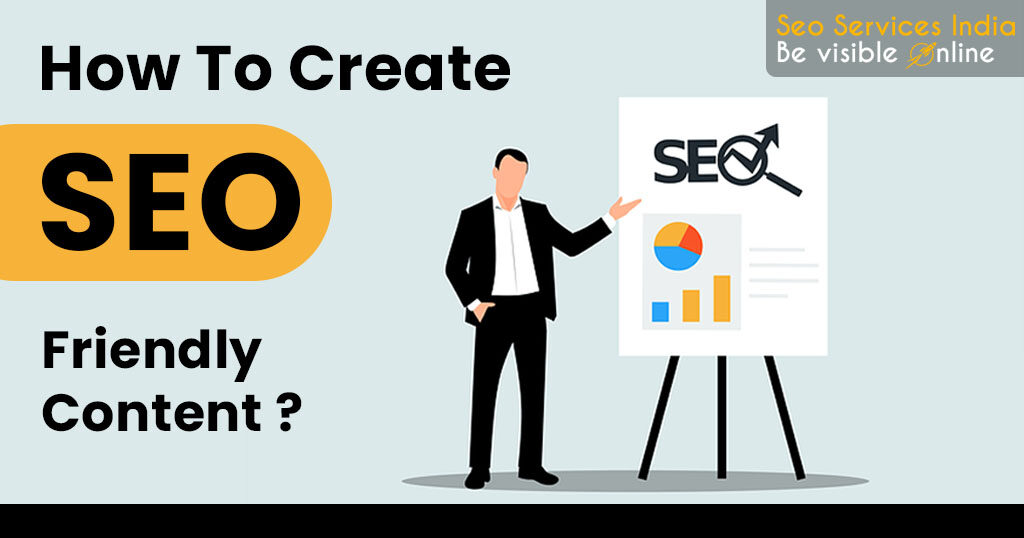
Building a website is aimed at providing information to potential users, but is it possible to enable genuine knowledge flows to the users without them knowing about you? This is where SEO-friendly content helps!
Search engine optimization is a package of techniques that enables you to reach a wider potential audience and connect your relevant content to their search query efficiently.
SEO-friendly content will improve the ranking of your website on google listings and therefore make it visible to the target audience. Google algorithms scrutinize the content on all websites related to the client search queries and then rank it in order.
This ranking is very crucial to generate traffic on your website since when your website ranks on top, more people will choose the top results and hence generate more footfall. However, this ranking does not gets into work on its own!
One needs to develop content that drives the search engine factors and satisfies its rules. Therefore it is important to know how to write SEO-friendly content to rank above your competitors.
Many people focus on making the content SEO-friendly so much that they ignore the importance of making the content user-friendly too! To solve this problem, the content should be focused on providing relevant information to users and also feed the ranking needs with respect to AI algorithms. There are several best practices to make your content SEO-friendly:
The very first and most important factor that affects your ranking is keywords. Keywords are related to search queries and specific words that a user might use. It involves knowing the right keyword that the user might want to associate with the information they are searching for and then using those keywords optimally in the content.
However, people tend to stuff the content with a loaded keyword density whereas the right way is to use them gradually into the content length at certain intervals. It is also important to choose keywords that suit your content correctly and makes sense with the content idea.
Content structure is a way to break the topic into parts and sub-parts. Knowing the depth of details of a topic can only make you knowledgeable about how to structure the content and divide it into relevant parts.
To write SEO-friendly content, it is very useful to write content with great design. By design we mean, using written information under the right subheadings or headings. This will make your content look easier and simpler to understand and locate by the search engine. Read More: What is Google Page Experience, & Why Does it Matter in Ranking?
Now as the title is the first and most important visible component of your content to the user as well as the search engine. Making a title that fits the topic with utmost relativity and is attractive in terms of user psychology is very important.
Make sure you use the right words that clearly specify the crux of the content ahead of the title. If the title is not efficient and attractive, at the same time, it may lead to a lower ranking for your website. It is advised to keep the title within the limit of 60 characters and not exceeding.
Once you structure your blog, you need to structure your paragraphs as well. This means using the information in order of its context and longevity. Related parts should be clubbed together and thus forming separate paras for clubbing relevant insights together.
However, again the length of paragraphs or content is not what drives the traffic solely, but the quality is a major factor. Paragraphs should be small, and specifically aimed at focused topics.
To write SEO-friendly content, it is necessary to build attractive and self-explanatory headings for content aligned in paragraphs. Headings are just like titles for different parts of the same content.
Building effective headings need you to incorporate keywords, as well as clearly define the content ahead crisply and shortly. Headings should not be repetitive otherwise the algorithms will rule out the rankings. Each heading should signify a relevant connection with the broad topic.
A meta description is that part of your content that shows below the title on the search query page. According to a Professional Seo Agency, the meta description is a short, crisp summary of the content that ranges up to a maximum of 160 characters.
Therefore it has to be to the point and a perfect representative of the broader concept discussed in the content. It s good to incorporate the most relevant keyword in the meta description. Meta description helps search engines to locate your content and rank it for the client query.
Writing SEO-friendly content can make your efforts worth it and increase your site traffic drastically by improving its ranking visibility.
You May Also Like: Is Your Website Ready According to the New Page Experience Update?
You May Also Like: What are the Benefits of Hiring a Professional SEO Agency?